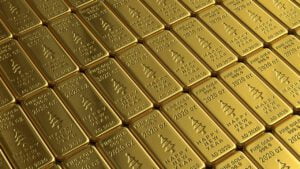What Is The Gold Price In France?

France is facing an energy crisis that threatens the country with hyperinflation. Investing in gold during high inflationary periods has helped many investors protect their wealth against inflation.
What is the current price of gold in France? Since gold is one of the most popular precious metals to invest in worldwide, knowing the price of gold in various markets can help you make informed decisions when deciding to make a gold purchase. Bullion Exchanges offers a live Gold Price Chart on our website, so you can buy and sell at optimal prices.
Q2 2022 hedge fund letters, conferences and more
Currency of France - The Euro
If you wish to purchase gold in France, you would do so using the Euro (EUR). The euro is the single currency shared by European Union countries that have adopted it. After a decade of preparations, the euro was ‘soft-launched” on Jan 1st, 1999. Later, the biggest cash changeover in history took place on Jan 1st, 2002, when coins and banknotes were officially launched and used in circulation.
History of French Currency
Before the Euro was adopted, however, the monetary unit of France was the franc. Established in 1799, the franc was made divisible into 10 decimals and 100 centimes.
When most of France’s foreign colonies attained independence in the 1950s and early ’60s, many of the resulting Saharan and sub-Saharan African nations retained the name franc for their own basic monetary units. In 1999, as France began to phase out the French franc, the currencies of these nations also became linked to the euro.
Even before the use of Francs, there was another unit of currency po[ularized in France: the livre. King Philip II Augustus, who reigned from 1165 to 1223 CE, was the first Capetian king to standardize money in the nation. He hoped to stabilize trade across the lands he conquered by using the livre tournois as money for his empire. Unfortunately, since Philip II controlled many lands, the currency was constantly in flux. Later on, in 1360 and 1641, French currency was introduced to coins equal to one livre tournois which were known as francs. Francs did not officially become the French currency until the late 1790s.
Gold Production In France
There is evidence that gold was discovered in the Limousin region in Southern France as far back as 100 – 200 BCE. Over time, other small deposits of gold have been discovered throughout France. There are many rivers and streams located all over France which have the potential to produce gold for recreational prospecting. Unfortunately, none of these sources have been significant enough to register on a large commercial scale.
The one exception to this statement would be the Salsigne Gold Mine. This open-pit mine in the South West of France was first utilized by the Romans who were only able to extract iron at the time, and it is now known for producing profitable gold ore.
Gold Spot Price Factors In France
Gold is a globally traded commodity, and therefore its prices are always on the move. Many different factors affect Gold prices, and these factors can have a ripple effect on the price of the metal all over the world. In France, the spot price of gold has been steadily climbing since 2018 while passing through minor fluctuations. The spot price of gold reached a peak in mid-2020 at around 1725 EUR, then temporarily fell back down again until its next peak in early 2022. Some primary influences on the price of gold include:
- Currency fluctuations
- Central bank activity
- Investment demand
- Interest rates
- Inflation
- Jewelry demand
- Market Volatility
Mints In France
The French Mint
Established in 864 CE, The French Mint (known as Monnaie de Paris or “The Paris Mint”) possesses one of the longest and most prestigious histories of European coinage. In 1973, Monnaie de Paris relocated its primary production to a facility in Pessac in Southwestern France. Today the original facility in Paris is still operational but mainly serves as a museum with a collection of many ancient coins.
The French Economy
France boasts a highly developed economy that is market-oriented. It is the 3rd largest economy in Europe after Germany and the UK, as well as the world's seventh-largest economy by 2022 nominal figures. In 2020, France was ranked among the 10 most innovative countries in the world by the Bloomberg Innovation Index.
While France has a diversified economy, it is mainly dominated by the service sector which represented 78.8% of its GDP in 2017. That same year, Its industrial sector accounted for 19.5% of its GDP and its primary sector accounted for the remaining 1.7%. Nowadays, France's economy is led by manufacturing, tourism, and pharmaceuticals.
Updated on
Source valuewalk






